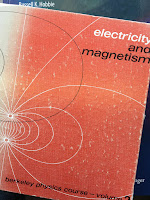Well… no.
I recently found a textbook that preceded IPMB by over a century. Below is its preface.
The fact that a knowledge of Physics is indispensable to a thorough understanding of Medicine has not yet been as fully realized in this country as in Europe, where the admirable works of Desplats and Gariel, of Robertson, and of numerous German writers, constitute a branch of educational literature to which we can show no parallel. A full appreciation of this, the author trusts, will be sufficient justification for placing in book form the substance of his lectures on this department of science, delivered during many years at the University of the City of New York.Readers of IPMB might be interested in a brief table of contents for this earlier book.
Broadly speaking, this work aims to impart a knowledge of the relations existing between Physics and Medicine in their latest state of development, and to embody in the pursuit of this object whatever experience the author has gained during a long period of teaching this special branch of applied science. In certain cases topics not strictly embraced in the title have been included in the text—for example, the directions for section-cutting and staining; and in other instances exceptionally full descriptions of apparatus have been given, notably of the microscope; but in view of the importance of these subjects, the course pursued will doubtless be approved. Attention may be called to the paragraph headings and italicized words, which suggest a system of questions facilitating a review of the text.
In conclusion, the author will feel that his labor has not been in vain if the work should serve to call deserved attention to a subject hitherto slighted in the curriculum of medical education.
I. Matter
1. Properties of matter
2. Solid matter
3. Liquid matter
4. Gaseous matter
5. Ultragaseous and radiant matter
II. Energy
1. Potential energy
2. Kinetic energy
3. Machines and instruments
4. Translatory molecular motion
5. Acoustics
6. Optics
7. Heat
8. Electricity
9. Dynamic electricity
10. Magnetism
11. Electrobiology
Many of these topics are familiar to readers of IPMB. Yet, the list and the language seem quaint and just a little old-fashioned. |
| A Text-Book on Medical Physics, by John C. Draper. |
This should not be surprising. The book was titled A Text-Book on Medical Physics, written by John C. Draper, and published in 1885. Russ Hobbie and I are following a long tradition of applying physics to medicine and biology. In nearly 140 years much has changed, but also much has stayed the same. The last sentence of the preface could serve as our call to arms, and the subtitle of Draper’s book could be our own: “For the Use of Students and Practitioners of Medicine.”
Below I post the definition of medical physics in the Text-Book. I love it. Draper should have written a blog!


























